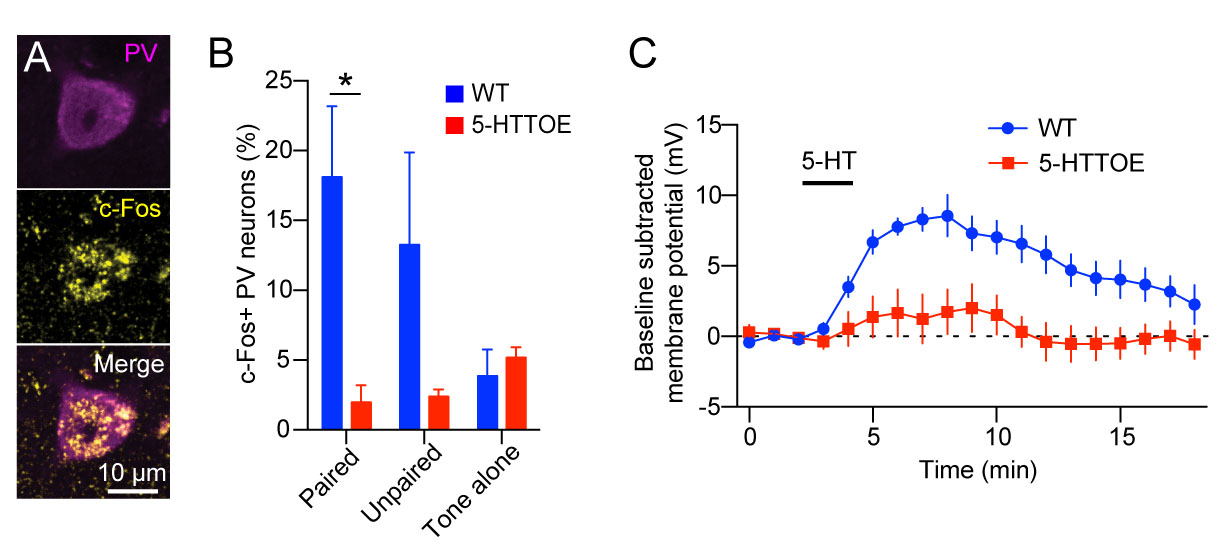Increased Serotonin Transporter Expression Reduces Fear and Recruitment of Parvalbumin Interneurons of the Amygdala.
Human genetic variations in the serotonin transporter appear to underlie susceptibility to psychiatric disorders. Here, we show mechanisms linking serotonin reuptake to emotional behaviour. We discovered that genetically increased expression of the serotonin transporter in mice leads to reduced fear and altered function of nerve cells of the amygdala, a brain region that controls fear responses.
Genetic association studies suggest that variations in the 5-hydroxytryptamine (5-HT; serotonin) transporter (5-HTT) gene are associated with susceptibility to psychiatric disorders such as anxiety or posttraumatic stress disorder. Individuals carrying high 5-HTT-expressing gene variants display low amygdala reactivity to fearful stimuli. Mice overexpressing the 5-HTT (5-HTTOE), an animal model of this human variation, show impaired fear, together with reduced fear-evoked theta oscillations in the basolateral amygdala (BLA). However, it is unclear how variation in 5-HTT gene expression impacts on the microcircuitry of the BLA to change behavior. We addressed this issue by investigating the activity of parvalbumin (PV)-expressing interneurons (PVINs), the biggest IN population in the basal amygdala (BA). We found that increased 5-HTT expression impairs the recruitment of PVINs (measured by their c-Fos immunoreactivity) during fear. Ex vivo patch-clamp recordings demonstrated that the depolarizing effect of 5-HT on PVINs was mediated by 5-HT2A receptor. In 5-HTTOE mice, 5-HT-evoked depolarization of PVINs and synaptic inhibition of principal cells, which provide the major output of the BA, were impaired. This deficit was because of reduced 5-HT2A function and not because of increased 5-HT uptake. Collectively, these findings provide novel cellular mechanisms that are likely to contribute to differences in emotional behaviors linked with genetic variations of the 5-HTT.

2021. eLife, 10:e65444